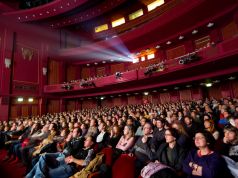10 March4 September 2005. Amsterdams 750,000 residents share their city with an astonishing variety of animal life: dogs, cats, ring-neck parakeets, herons, lions, grass snakes, pigeons, cockroaches, mice, hamsters, rats the list is endless. The Stadse Beesten (Urban Animals) exhibition at Amsterdams Historisch Museum is a tribute to them and their ability to adapt to an environment determined primarily by human beings. A nature reserve has been re-created within the walls of the museum and the changing role of animals in the city and their relationship with humans both in the past and the present is brought to life. Bones of forest animals and mammoths which roamed the area of Amsterdam in prehistoric times are also on show, having been recently discovered in the sand during the building of a new housing development in IJburg. A web-cam set up in a peregrine falcons nest atop the chimney of the Nuon power plant transmits images of the newly-hatched chick. Huge projections of animals in the wilds of the city and in captivity confront the visitor at every turn, and diaries and sketchbooks of animal-loving Amsterdammers of the past are also on display. There is an interactive tour especially for children and a beautifully illustrated book by Amsterdam City biologist, Remco Daalder, accompanies the exhibition. Admission is 6 half price for children. Mon Fri 10.00 17.00, Sat Sun 11.00 17.00.
General Info
View on Map
Urban Animals.
The Historisch Museum has two main entrances which can be accessed from Kalverstraat 92, Sint Lucinsteeg 27 and Nieuwezijds Voorburgwal 357. The museum is a twelve-minute walk from Amsterdam's central station, via Damrak, Dam Square and Kalverstraat. Tr

























